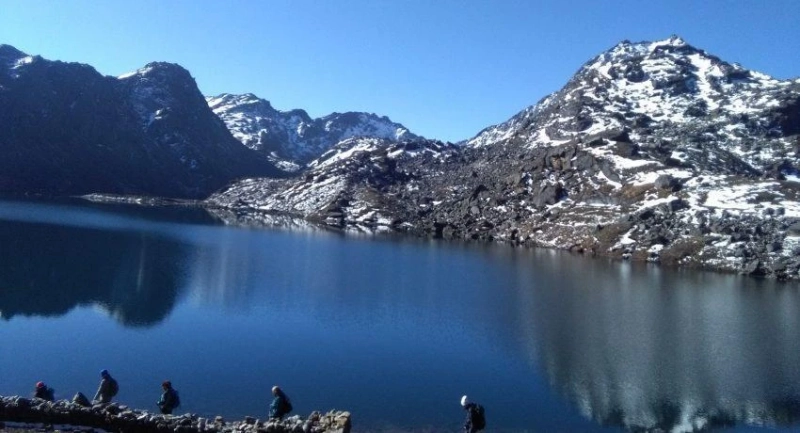The Langtang Trek, located in the quiet and attractive region north of Kathmandu, provides a mesmerizing combination of natural beauty, rich culture, and tranquil pathways. Langtang is sometimes overshadowed by more well-known treks such as Everest Base Camp and the Annapurna Circuit, yet it offers a more intimate and less crowded trekking experience. This walk takes you through the breathtaking Langtang Valley, which is surrounded by high hills and studded with traditional villages, making it an ideal retreat for travelers seeking both beauty and seclusion.
Why Choose the Langtang Trek?
The Langtang Trek is renowned for its breathtaking scenery, including verdant forests, alpine meadows, and awe-inspiring mountain vistas. Unlike more popular trekking routes, Langtang remains relatively untouched, offering trekkers a chance to explore a pristine environment and experience authentic local culture. The trek is moderately challenging, making it accessible to a wide range of trekkers, from beginners to seasoned hikers.
Starting Point: Syabrubesi
The journey begins with a scenic drive from Kathmandu to Syabrubesi, the starting point of the trek. The drive itself is an adventure, providing glimpses of terraced fields, rural villages, and the dramatic landscape of the Trishuli River Valley. From Syabrubesi, trekkers set off on foot, following the trail that winds through dense forests of rhododendron, bamboo, and oak, home to diverse wildlife such as the elusive red panda and langur monkeys.
Trekking Through the Langtang Valley
As the trail ascends, it passes through traditional Tamang villages like Lama Hotel, Langtang Village, and Kyanjin Gompa. These villages offer a warm welcome and a glimpse into the traditional lifestyle of the Tamang people, who are known for their hospitality and vibrant culture. The trek provides numerous opportunities to visit ancient monasteries, mani walls, and chortens, adding a spiritual dimension to the journey.
Highlights: Kyanjin Gompa and Tserko Ri
One of the highlights of the Langtang Trek is reaching Kyanjin Gompa, a picturesque village surrounded by snow-capped peaks. Here, trekkers can visit the famous Kyanjin Monastery and enjoy the panoramic views of Langtang Lirung (7,227 meters) and other towering summits. For those seeking an extra challenge, a day hike to Tserko Ri (4,984 meters) offers a rewarding climb with stunning sunrise views over the Langtang range.
Post-Earthquake Recovery
The Langtang region was severely affected by the 2015 earthquake, but it has since made a remarkable recovery. Trekking in Langtang not only provides a memorable adventure but also supports the local communities in their ongoing efforts to rebuild and thrive. Trekkers will find rebuilt lodges, improved trails, and the same warm hospitality that Langtang is known for.
Best Time to Trek
The best seasons for the Langtang Trek are pre-monsoon (March to May) and post-monsoon (September to November). During these periods, the weather is generally stable, with clear skies and mild temperatures, making for an enjoyable trekking experience.
Preparation and Tips
While the Langtang Trek is moderately challenging, proper preparation is essential. Trekkers should be in good physical condition and acclimatize gradually to avoid altitude sickness. Packing appropriate gear, including warm clothing, sturdy footwear, and essentials for remote trekking, ensures comfort and safety on the trail.
Conclusion
The Langtang Trek offers a unique and enriching experience for trekkers looking to explore one of Nepal’s hidden gems. With its combination of stunning natural beauty, rich cultural encounters, and a sense of tranquility, the Langtang Valley promises an unforgettable adventure. Whether you are a novice trekker or an experienced hiker, the Langtang Trek provides an opportunity to immerse yourself in the pristine beauty and vibrant culture of Nepal’s mountainous heartland. Embark on the Langtang Trek and discover the magic of this hidden valley.


